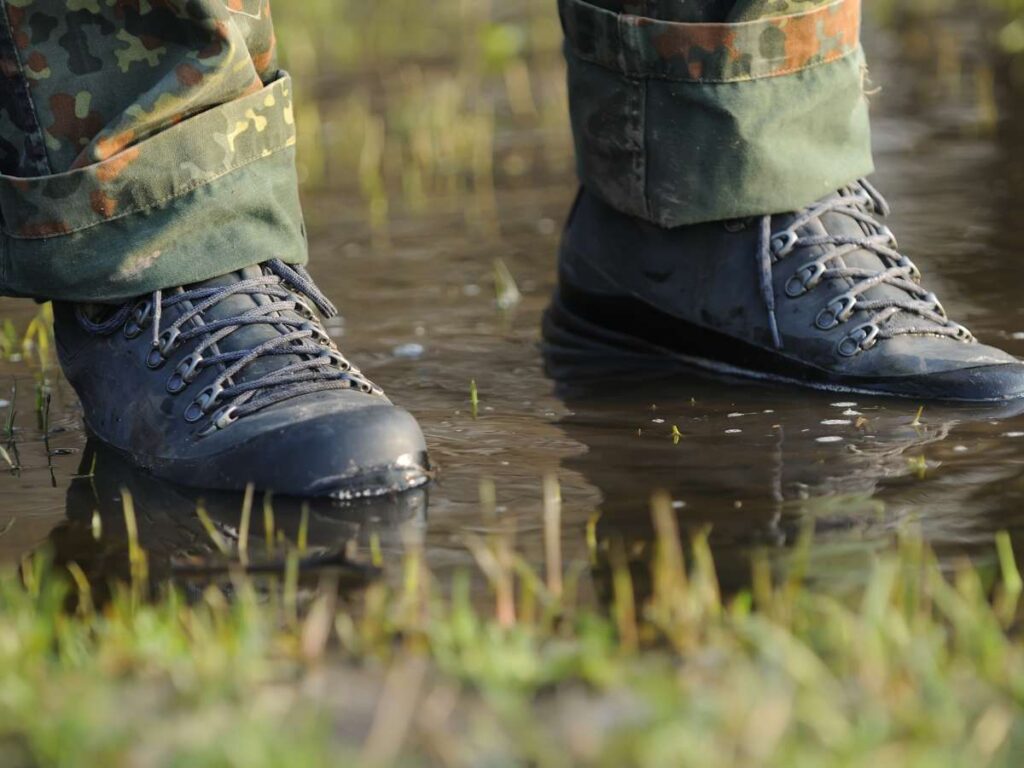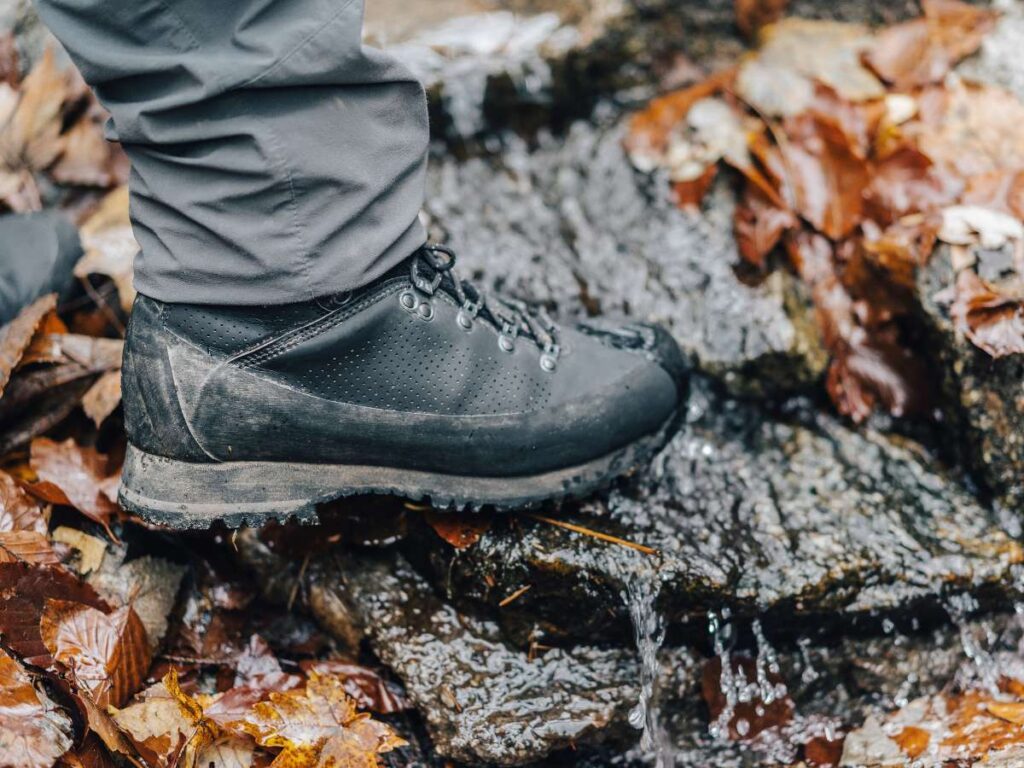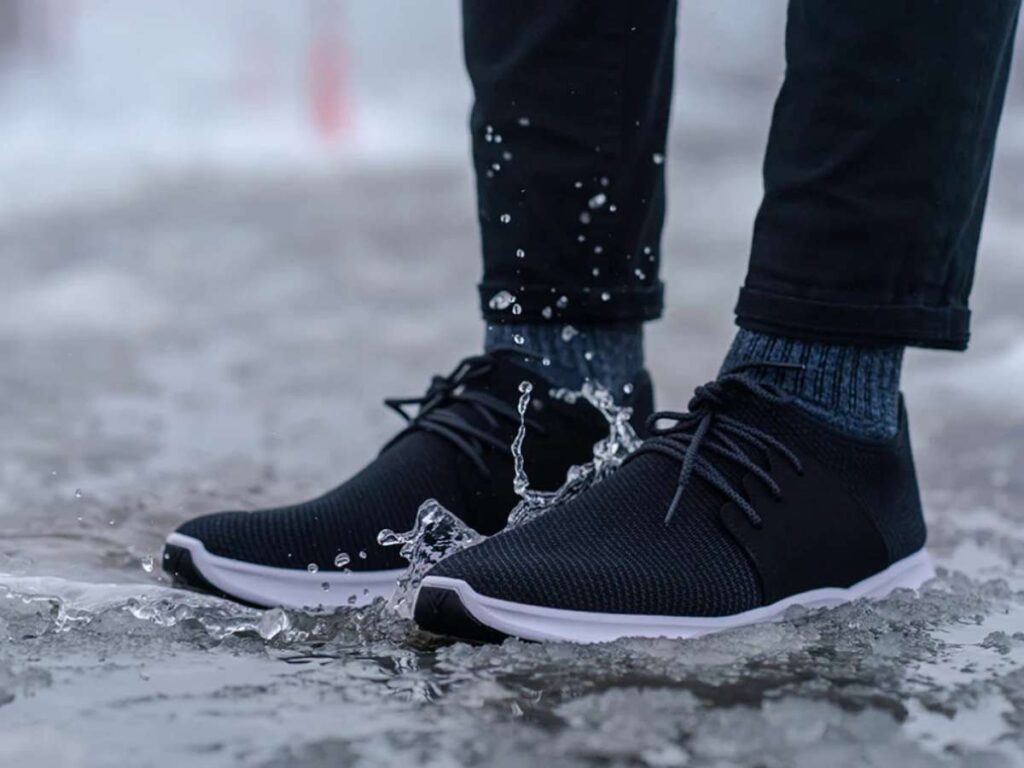What Makes a Shoe Waterproof?

Author: Andy Hong | Founder at XDS
Hi, I'm Andy Hong, here to share my expertise in footwear manufacturing with you.
What Makes a Shoe Waterproof?
Table of Contents
When it comes to waterproof shoes, I’ll admit I didn’t always know the full picture.
To provide better insights, I’ve dedicated hours to researching what makes a shoe truly waterproof.
Now, I’d like to share what I’ve learned to help you understand it better.
A shoe becomes waterproof through a combination of specialized materials, construction techniques, and protective coatings that prevent water from entering while maintaining comfort.
In this guide, we’ll break down the components that make a shoe truly waterproof, covering materials, construction, and other essential factors.
Let’s start!
1. How Shoe Waterproofing Is Achieved
Waterproofing a shoe involves using materials and techniques that block water from entering while allowing breathability. It’s about balancing protection and comfort. This starts with waterproof fabrics that form a barrier against moisture without making the shoe feel heavy or stuffy. These materials are often paired with construction methods designed to keep water out, even in challenging conditions.
As explained in a study, the performance of waterproof fabrics isn’t just about keeping water out. Factors like how the fabric works with the body and how long it lasts are just as important. If you’re looking for waterproof shoes built to last, XDS stands out with frequent quality inspections to keep standards high and consistent.

2. Key Features That Make a Shoe Waterproof
What makes a shoe waterproof? A combination of thoughtful design and functional elements work together to keep feet dry. Below are the key features that contribute to a shoe’s waterproof performance:
Waterproof Materials
Waterproof shoes often use fabrics like membranes or treated synthetics to block water while letting air circulate. These materials form a protective barrier, keeping moisture out and maintaining comfort.
Seam-Sealed Construction
Seam-sealing plays a vital role in preventing leaks. Taped or welded seams in key areas stop water from seeping through stitching, making the shoe more effective against moisture.
Durable Outer Layer
The outer layer of a waterproof shoe is designed to repel water on contact. Materials like treated leather or water-resistant synthetics create an additional shield, so water beads off rather than soaking through. This adds a layer of protection while enhancing the shoe’s overall durability.
Properly Designed Outsole
A well-designed outsole isn’t just for traction—it also keeps water from pooling underfoot. Raised treads and specialized patterns help channel water away, improving grip and reducing the chances of slipping in wet environments.

3. Materials Used in Waterproof Shoes
In the previous section, we touched on how materials play a crucial role in making a shoe waterproof. The right materials not only block water but also maintain breathability and comfort. Below are some of the most common materials used in waterproof shoes:
Waterproof Membranes
These are the core of most waterproof shoes. Membranes like Gore-Tex are designed to block water while allowing moisture vapor to escape. This balance helps keep feet dry and comfortable, even during extended wear.
Treated Leather
Leather is naturally durable, but when treated with water-repellent finishes, it becomes a strong barrier against moisture. Treated leather is commonly used in outdoor and work footwear due to its combination of durability and weather resistance.
Synthetic Fabrics
Synthetic materials like nylon and polyester are often coated or laminated to resist water. These lightweight options are great for shoes that need to be flexible and breathable while keeping moisture out.
Rubber Components
Rubber is naturally waterproof, making it ideal for soles and lower parts of the shoe. It adds durability and creates a solid shield against water from puddles or wet surfaces.

4. Construction Techniques for Waterproof Shoes
Materials alone don’t make a shoe waterproof; how those materials are put together matters just as much. Construction techniques are critical for sealing off potential entry points for water while maintaining the shoe’s overall performance and comfort. Below are the most effective construction methods used in waterproof footwear:
Seam-Sealed Construction
This technique involves taping or welding seams to stop water from leaking through stitched areas. It’s especially important in high-stress zones like the sole and upper connection. Seam-sealing adds a layer of protection without making the shoe feel bulky.
Gusseted Tongues
A gusseted tongue is attached to the sides of the shoe, creating a barrier that keeps water, dirt, and debris from entering through the laces. This small yet effective detail enhances the shoe’s waterproofing and makes it more functional for outdoor activities.
Direct-Attach Midsoles
This method fuses the sole directly to the shoe’s upper, leaving no gaps for water to seep through. It creates a strong bond and contributes to the overall durability of the footwear, making it a preferred choice for waterproof designs.
Waterproof Linings
Linings with built-in waterproof membranes are carefully integrated into the shoe during construction. These linings not only block water but also allow moisture from the foot to escape, preventing discomfort from sweat buildup.
5. Special Coatings and Treatments
These additional layers enhance the shoe’s ability to repel water, extend durability, and improve performance in wet conditions. Below are some common coatings and treatments used in waterproof footwear:
- Durable Water Repellent (DWR): This coating causes water to bead up and roll off the surface of the shoe. It’s often used on fabrics and leather to provide an added layer of moisture resistance.
- Silicone-Based Sprays: These sprays are applied post-production to create a thin, water-resistant barrier. They are popular for maintaining the waterproofing of outdoor shoes.
- Wax Treatments: Commonly used on leather, wax creates a protective layer that seals the pores and adds water resistance. It also helps preserve the material over time.
- Polyurethane (PU) Coatings: PU coatings are applied to fabrics to create a waterproof membrane. This method is lightweight and often used in athletic and casual waterproof shoes.
- Anti-Stain Treatments: Some waterproof shoes include coatings that repel not only water but also stains from mud or dirt. This keeps shoes looking cleaner and easier to maintain.
6. Testing and Certification for Waterproof Shoes
Even with high-quality materials and advanced construction techniques, waterproof shoes need to meet certain standards to prove their effectiveness. Testing and certification processes help verify that the shoes can handle wet conditions while remaining durable and comfortable. Below are the common tests and certifications used to assess waterproof footwear:
Water Penetration Tests
These tests evaluate how well a shoe resists water under different conditions, such as heavy rain or shallow puddles. Shoes are often submerged or exposed to water spray for a set period, and their ability to keep moisture out is measured. This gives a clear indication of the shoe’s waterproof capabilities.
Breathability Assessments
Breathability tests check how effectively the shoe allows moisture vapor to escape. This is especially important for waterproof shoes, as trapped sweat can cause discomfort. By measuring airflow and moisture release, manufacturers can confirm a balance between water resistance and comfort.
Durability Testing
Waterproof shoes undergo stress tests to simulate real-world conditions. This includes flexing, abrasion, and repeated exposure to water. These tests ensure the shoe holds up over time without losing its waterproofing properties.
Certification Standards
To meet industry benchmarks, waterproof shoes often comply with certifications such as REACH, ROHS, or similar standards. These certifications validate that the materials and construction methods meet strict quality and environmental guidelines.
Conclusion
Waterproof shoes are built with careful consideration of materials, construction, and additional treatments to keep feet dry and comfortable. Understanding these elements helps you make better choices when selecting the right footwear for wet conditions.
For businesses, meeting Minimum Order Quantity (MOQ) requirements can be a challenge. At XDS, we address this concern by offering low and flexible MOQs. With minimum orders starting at just 500 pairs for select styles and adaptable small production lines, we work to support new customers with manageable order sizes. Contact us today to discuss your footwear needs!
Check Out These Additional Resources
For more helpful content, explore our collection of recommended reads:
Still haven’t found what you’re looking for? Don’t hesitate to contact us; we’re available around the clock to assist you.
Quick Quote
Fill out the form, get the quote in hours!





